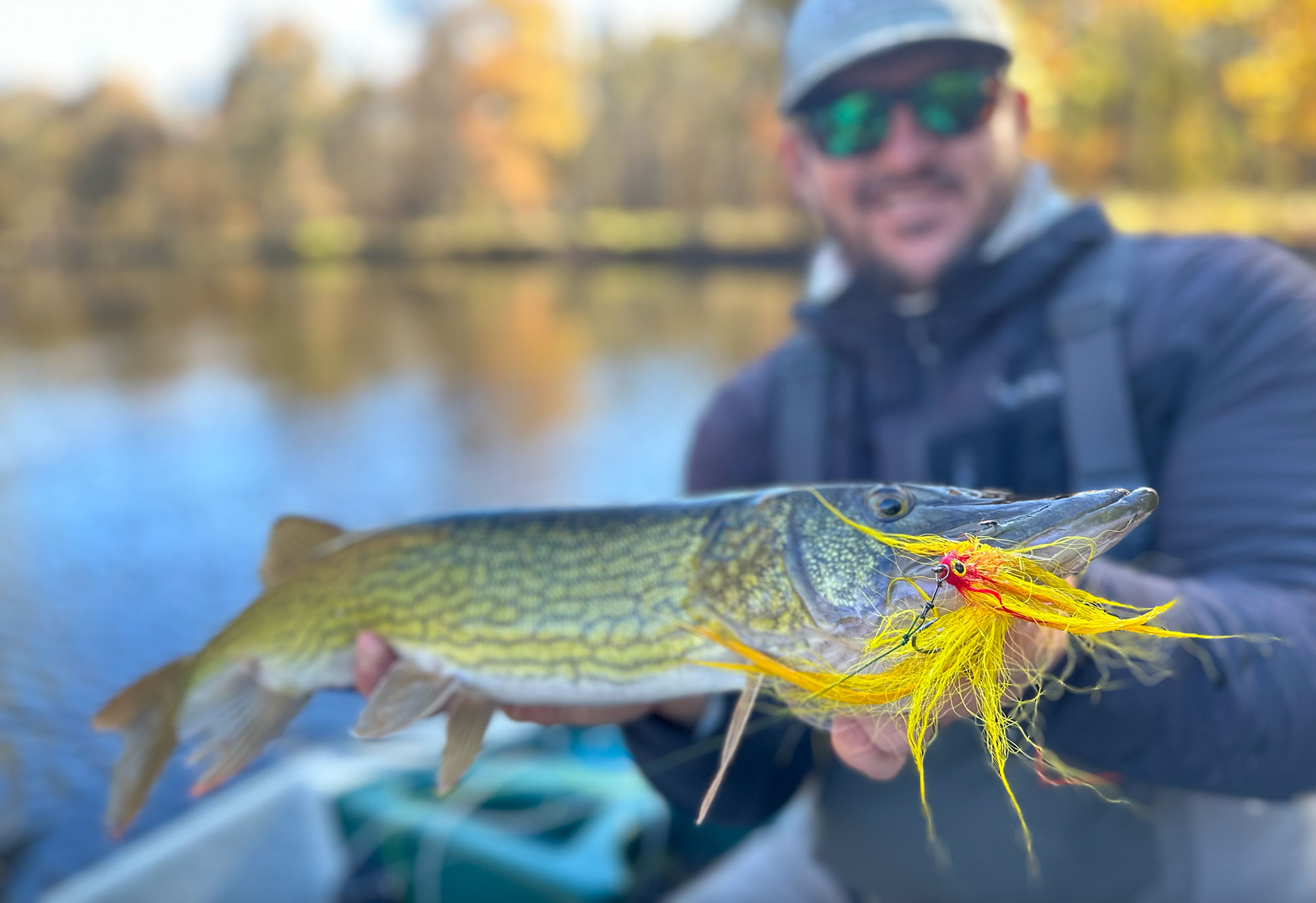When other fish are taking a winter’s nap, chain pickerel are eager to strike a fly

Pickerel fishing can get hot when the mercury dips. Photo by Joe Cermele
We may earn revenue from the products available on this page and participate in affiliate programs. Learn More ›
I’ve been a fan of chain pickerel since I was a kid. That’s largely because where I grew up there weren’t any pike and even though there were some muskie haunts, those fish felt too unattainable. As an adult, I still believe the lowly chain pickerel doesn’t get enough respect. I’m betting some of you have them in your backyard and don’t pay them much mind. That’s a mistake, especially during winter. Unlike bass, trout, and bluegills, which can be very tough to fool once the water drops below roughly 45 degrees, pickerel are still eager to attack.
They also make exceptional fly rod targets for beginners and advanced casters alike. So, don’t tuck the long rod away until spring just yet. If you’ve never taken a crack at these underdogs, here’s how to catch pickerel in winter.
Slow Your Retrieve
During an ice fishing trip years ago, a buddy aimed an underwater camera on one of the live shiners dangling below a tip-up. In short order, a pickerel appeared on the screen. We were certain it would plow the bait seconds after it arrived, but the opposite happened. The predator just hovered in place barely flicking its fins, studying the shiner as it swam frantically in a circle. For five minutes nothing changed, and then, as if out of gas, the shiner went limp. This, we thought, would make the pickerel go away, but it stayed. Then, the tired shiner made one half-hearted tail kick and WHAM! The pickerel hit and up popped the flag. Similar scenes unfolded several more times throughout the day, and the experience taught me a lot about how pickerel feed in cold water.
Whereas an aggressive approach might get pickerel charged up during warmer times, subtlety pays off in the cold. Learning from what I saw on the ice that day, I began using unweighted streamers with a bit of bulk for catching pickerel in cold winter. Patterns like the Double Deceiver, Mini Drunk & Disorderly, and the Dirty Hippy are all good examples of streamers that can be manipulated to hover the water column, or at least fall away slowly enough that they’ll linger in front of fish’s face.
When these bulky flies are presented on floating fly line, it takes minimal work to make them gently twitch and you can keep them in the zone a long time. Conversely, any pattern with a weighted head will not only sink when you pause but require a much more aggressive strip to bring to life. That’s not ideal.
Use a Strike Indicator
Just because slow retrieves are often the most productive during the winter doesn’t mean weighted flies have no place in your cold season arsenal. They can be highly effective, but the secret is presenting them under a large, buoyant strike indicator like a Thingamabobber. In essence, matching this float with a weighted fly is the equivalent of casting a soft-plastic jig under a bobber with spinning gear. It can be downright lethal.
Some of my favorite flies for this method include the Clouser Minnow, Lunch Money Shad, and the Flash-and-Grab. All of them feature weighted dumbbell eyes that help keep them oriented horizontally when hanging below a strike indicator. My preference is a 1-inch Thingamabobber, as it can suspend a fairly heavy pattern. It can also be easily slid up and down your leader to adjust depth of your fly.
All you have to do is fire out a long cast and let the fly hang there in the middle of the water column. Don’t be afraid to wait a minute or longer before giving the line one short, fast strip to make the fly rise and fall again. You can milk a retrieve like this for a long time, as it will help keep the fly hanging around likely cover long enough to get a chilly, unwilling pickerel to make a move.
Read Next: Best Fly Fishing Combos for Beginners of 2023
Fish the Warm Spots
Whether you’re fishing from shore or have access to a boat, considering the time of day you’re fishing, as well as the depth, bottom content, and structure you’re targeting are critical. Quite often there is a short—but sweet—feeding window later in the day, which often correlates with an uptick in water temperate, even if only by a degree or two. Of course, an entire lake or river isn’t likely to bump up a few degrees in a single day during the winter, but certain areas will.
I like to focus on spots three to four feet deep in close proximity to deeper water. Areas with dark bottom will hold more heat from the sun, as will any downed trees or wood poking through the surface. Despite the cold, pickerel need to feed, and during that bite window, areas that check one or more of these boxes are prime. If you spend enough time on your local waters, winter patterns quickly emerge and before long you’ll figure out which banks and cover are worth beating to death because you’ll know a fish or two is likely holding there. Some days just may require more coaxing than others to get them to chew.
